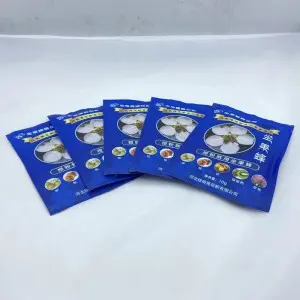Dec . 16, 2024 16:03 Back to list
Germination Process of Pollen from Chinese Pear Varieties
The Germination of China Pear Pollen Insights and Implications
Introduction
Pollen germination plays a critical role in the reproductive success of flowering plants. Among various species, the China pear (Pyrus communis) has drawn considerable attention due to its economic significance and unique breeding characteristics. Understanding the germination of this pollen not only enhances our knowledge of plant biology but also contributes to agricultural practices and sustainable fruit production. This article explores the key factors affecting China pear pollen germination, the underlying biological mechanisms, and its implications for cultivation.
Factors Affecting Pollen Germination
Several intrinsic and extrinsic factors influence pollen germination in China pear. Among the intrinsic factors, pollen viability, which refers to the ability of pollen to germinate and produce a pollen tube, is paramount. Pollen grains from healthy flowers generally show high viability, while those from stressed or diseased plants exhibit reduced germination capacity.
Extrinsic environmental conditions such as temperature, humidity, and the presence of specific nutrient media are critical for successful germination. Optimal temperature ranges for China pear pollen germination typically lie between 20°C to 25°C. Deviation from this range can lead to decreased germination rates. Similarly, humidity levels are crucial; both extremely dry and overly moist environments can adversely affect pollen viability.
The Role of Sugar and Nutrients
One of the most significant findings in the study of pollen germination is the role of sugars and other nutrients. Sugars, particularly glucose and sucrose, are essential for energy production during the germination process. Research has shown that the addition of sugar to the germination medium can significantly enhance the germination rate and ensure the successful growth of the pollen tube.
Moreover, other nutrients such as boron and calcium are vital; they contribute to cell wall structure and function during pollen tube growth. A deficiency in these nutrients can lead to poor pollen tube elongation, which is critical for successful fertilization.
china pear pollen germination

Biological Mechanisms
The germination of pollen grains involves a series of complex biological processes. Initially, the pollen grain hydrates and swells when exposed to suitable environmental conditions. The exine, the outer layer of the pollen grain, breaks, and the pollen tube begins to emerge. This tube is essential for delivering sperm cells to the ovule.
In China pear, the interaction of pollen with the stigma of the flower plays a crucial role. The stigma, which is often covered with a sticky substance, provides a conducive environment for pollen germination. The chemical signals released by the stigma attract the pollen and facilitate the germination process. Understanding these interactions is vital for improving pollination strategies in pear orchards.
Implications for Cultivation
The knowledge of pollen germination processes in China pear has significant implications for agricultural practices. By selecting optimal environmental conditions and utilizing techniques to enhance pollen viability, farmers can improve fruit set and yield. For instance, ensuring the right timing for pollination, based on weather forecasts and flower development stages, can maximize the chances of successful fertilization.
Moreover, breeding programs can benefit from insights into pollen viability and germination. By selecting parent plants that produce high-quality pollen, breeders can enhance the overall genetic quality of future generations. This practice is essential for developing varieties that are not only high-yielding but also resilient to environmental stressors.
Conclusion
The study of China pear pollen germination is a rich field of research that intersects plant biology and agricultural science. By understanding the factors and mechanisms that influence germination, we can enhance fruit production and ensure sustainable agricultural practices. As global demand for fruit increases, especially in the context of climate change and food security, optimizing pollination strategies will be vital for the future of pear cultivation and similar horticultural crops. Efforts to improve pollen viability and germination rates should continue, promising a brighter future for the cultivation of China pears and the horticultural industry as a whole.
-
Premium Cherry Pollen for Pure Pollination & Diverse Pollen Types
NewsJul.21,2025
-
Ultimate Insect, Bird & Waterproof Fruit Bagging | Protect Crops
NewsJul.21,2025
-
High-Quality Oak Pollen for Allergy Research & Testing – Reliable Oak Tree & Live Oak Pollen Supplier
NewsJul.08,2025
-
Premium Pear Pollen for Pollination in Orchards in Taiwan – Reliable Factories, Manufacturers & Suppliers
NewsJul.08,2025
-
Premium Pollen Producer & Apricot Pollen Suppliers High-Quality Apricot Pollen Factories
NewsJul.07,2025
-
Premium Juniper Tree Pollen for Fruit Tree Varieties – Quality Assured by Leading Plum Pollen Manufacturers
NewsJul.07,2025